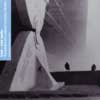Liszt Late Works
Liszt’s late piano works have a rare outing, this time in orchestral guise
View record and artist detailsRecord and Artist Details
Composer or Director: Franz Liszt
Genre:
Orchestral
Label: BMC
Magazine Review Date: 12/2002
Media Format: CD or Download
Media Runtime: 62
Mastering:
Stereo
DDD
Catalogue Number: BMCCD060

Tracks:
| Composition | Artist Credit |
|---|---|
| (2) Csárdás, Movement: Csárdás obstiné |
Franz Liszt, Composer
Camerata Transsylvanica Franz Liszt, Composer György Selmeczi, Conductor |
| (4) Valses oubliées |
Franz Liszt, Composer
Camerata Transsylvanica Franz Liszt, Composer György Selmeczi, Conductor |
| Historische ungarische Bildnisse |
Franz Liszt, Composer
Camerata Transsylvanica Franz Liszt, Composer György Selmeczi, Conductor |
| Csárdás macabre |
Franz Liszt, Composer
Camerata Transsylvanica Franz Liszt, Composer György Selmeczi, Conductor |
Author: John Warrack
Fascinating as they are, Liszt’s late piano pieces do not usually attract much attention from performers. Exceptions have been Alfred Brendel, the Liszt specialist Leslie Howard, and in his day John Ogdon, who wrote of Liszt ‘breaking the Germanic stronghold on 19th-century composers, and scattering the seeds of modern music almost literally to the four winds’. Particularly in the orchestral arrangement here by György Selmeczi, the kinship of passages in the Valses oubliées to the dark climax of Ravel’s La valse is strongly marked, and the whole of the second waltz could almost pass into Petrushka. Orchestration can enhance them but also mute them: the ferociously packed chords of the ‘Csárdás macabre’ sound more violent in the original. However, this is an interesting enterprise, and Liszt, who could never keep his hands off other men’s music, would hardly be in a position to complain.
The seven Hungarian Historical Portraits come off well in these versions, especially the celebration of the composer Mihály Mosonyi. Each ‘portrait’ commemorates a Hungarian artist or statesman, and that celebrating Lászlo Teleki rises to an elegiac climax that seems to burst the bounds of the piano and demand the orchestra. Yet part of the point, in Liszt’s virtuoso works of this nature, lies in the audible stretching of the medium to its extreme limits. In a way, to use the orchestra is to alter that point. Nevertheless, the Portraits, in particular, are so seldom heard and are so remarkable that one can be grateful to Selmeczi for these impressive arrangements and performances.
The seven Hungarian Historical Portraits come off well in these versions, especially the celebration of the composer Mihály Mosonyi. Each ‘portrait’ commemorates a Hungarian artist or statesman, and that celebrating Lászlo Teleki rises to an elegiac climax that seems to burst the bounds of the piano and demand the orchestra. Yet part of the point, in Liszt’s virtuoso works of this nature, lies in the audible stretching of the medium to its extreme limits. In a way, to use the orchestra is to alter that point. Nevertheless, the Portraits, in particular, are so seldom heard and are so remarkable that one can be grateful to Selmeczi for these impressive arrangements and performances.
Discover the world's largest classical music catalogue with Presto Music.

Gramophone Digital Club
- Digital Edition
- Digital Archive
- Reviews Database
- Full website access
From £8.75 / month
Subscribe
Gramophone Full Club
- Print Edition
- Digital Edition
- Digital Archive
- Reviews Database
- Full website access
From £11.00 / month
Subscribe
If you are a library, university or other organisation that would be interested in an institutional subscription to Gramophone please click here for further information.




